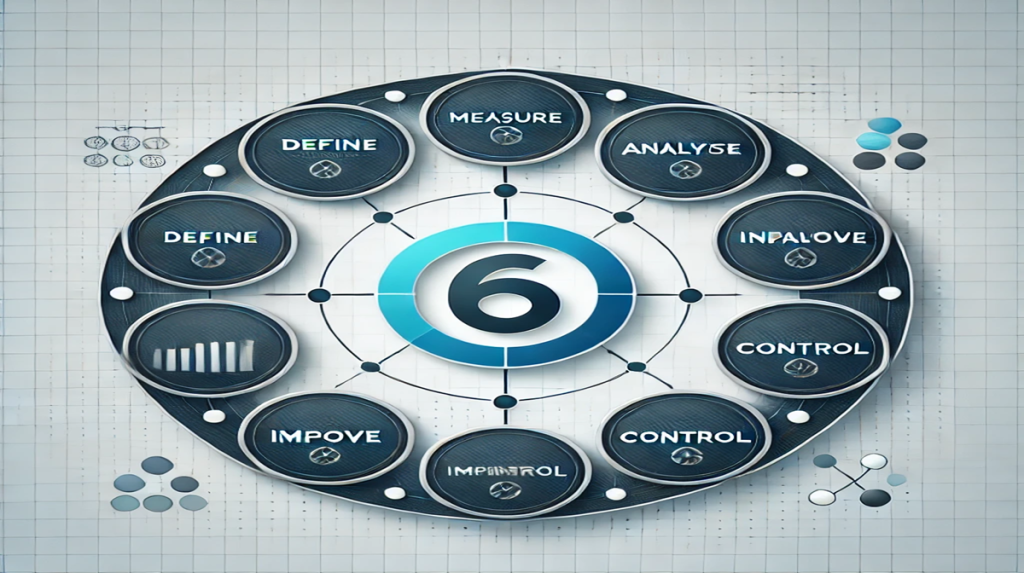The market space continues to evolve dynamically, and there’s a constant demand to reskill and upskill to stay relevant. Professional certifications improve efficiency and update you with the latest developments and requisite skills.
If you are looking for corporate training courses and certifications to add an edge to your professional portfolio, Education Nest can help you with the best learning programs. It also offers hands-on project-based learning and industry-recognized certifications.
The Lean Six Sigma concept enhances operational efficiency by optimizing resource utilization and eliminating defects. It combines different methods and tools to analyze business processes, identify challenges, and take remedial actions to boost performance.
So, what are the top tools that must be known to every Lean Six Sigma Green Belt? Read on to find out.

Top Tools For Lean Six Sigma Green Belt Certification
Business professionals largely pick the Lean Six Sigma Green Belt certification as it helps them clearly understand business processes and drive meaningful improvements where and when required. It uses diverse tools and techniques for efficient analysis and decision-making.
If you are interested in the Lean Six Sigma Green Belt certification, you must be aware of these tools and methodologies. Here are the top 10 tools that you must learn in your certification journey:
DMAIC
The DMAIC method is integral to the Lean Six Sigma concept and aims to improve existing process problems with careful analysis and data-driven insights. It includes five main phases: Define, Measure, Analyze, Improve, and Control. The first step is to define the requirement. The next step is quantifying it using the existing data, followed by root cause analysis. Then, improvements are made, and finally, controls are implemented to sustain them.
Kanban
The Kanban framework helps visualize workflows, highlight bottlenecks or interruptions, and assess progress. It includes a series of graphic cards to encourage high-level focus and collaboration. Kanban improves predictability with data-based workflow analysis. It leaves room for changes, review, and feedback. Thus, it is an essential Lean Six Sigma tool that supports agile project management.
Process Mapping
This technique is primarily used in Lean Six Sigma to clearly understand the workflows with a step-by-step sequential illustration of constituent processes. It creates a visual representation of the flow that helps determine inefficiencies and wastes and identifies areas of improvement. Thus, process mapping breaks down the workflow into detailed individual steps and offers more profound insights into the overall performance.
7 Wastes
Lean Six Sigma also prioritizes eliminating waste for improved processes. The 7 Wastes technique helps identify the major areas in which to cut waste. Mainly, these wastes are related to inventory, overproduction, overprocessing, waiting, transportation, motion, and defects. Identifying non-value-adding activities in these areas and eliminating them can smoothen business operations remarkably.
FMEA
FMEA (Failure Mode and Effect Analysis) is another crucial Lean Six Sigma tool that helps identify failures and assess their impacts. It follows a systematic approach to predict process failures beforehand, determine their severity, and develop mitigation plans accordingly. Thus, it modifies existing processes to prevent problems.
5S System
The 5S system simplifies workspace organization and improves productivity. There are five pillars: Sort, Set, Shine, Standardize, and Sustain. It aims to improve working conditions and maintain orderliness for continuous refinements. This Lean Six Sigma technique modifies workstations, helps reduce waste, and minimizes downtime.
5 Whys
The 5 Whys approach helps dig deeper into the problems, find the root cause, and solve them. It moves beyond the surface level by asking ‘whys’ iteratively. It is based on group brainstorming and helps explore all potential causes and possible solutions. Thus, it is a simple and effective Lean Six Sigma tool to develop a clear understanding of problems.
Fishbone Diagram
This Lean Six Sigma visual tool resembles the skeleton of a fish. It uses a structured approach to find the root cause of a problem. The first step is identifying the problem and defining primary categories and major contributing factors. Combined with the 5 Whys, it forms a powerful method for root cause analysis.
Value Stream Mapping
This visual tool also helps in gauging process efficiencies and effectiveness. It illustrates the systematic flow of materials and information graphically for better analysis. This Lean Six Sigma method also determines each step’s value, cost, and effectiveness and helps identify inefficiencies and problem areas.
Statistical Process Control
This process improvement methodology helps maintain the quality and consistency of business processes with logical analysis and data interpretation. It monitors different operations and identifies abnormalities that impact outcomes. This Lean Six Sigma tool also supports devising control measures to curb these inefficiencies.
Final Words
Lean Six Sigma Green Belts are valuable resources for any organization. They are expected to improve workflows and operations and enhance outcomes with their business proficiency. These tools and techniques are essential to understanding and resolving business problems and implementing effective solutions. Therefore, get a hold of these, and you can tackle all challenges efficiently!
If you are looking for effective corporate learning solutions to help you develop the latest requisite skills and expertise, check out the professional training courses Education Nest offers. It has been operational for about two decades and trained over 3,50,000 professionals.
Reach out to us today for more details!
You read this also:
Data Engineering: Building Robust Pipelines for Seamless Data Integration
How to Secure Your Customer’s Data: The Basics of Data Privacy and Security
References:
